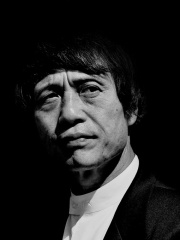
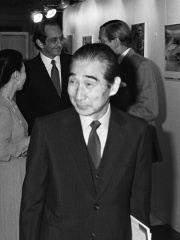
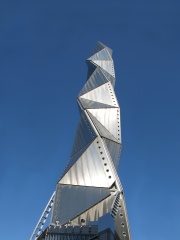
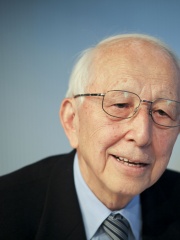
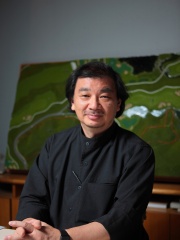
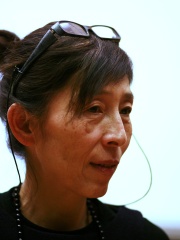
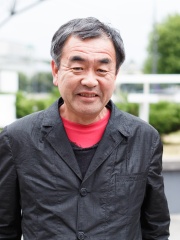
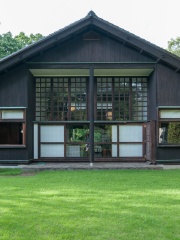
The Most Famous
ARCHITECTS from Japan
This page contains a list of the greatest Japanese Architects. The pantheon dataset contains 518 Architects, 12 of which were born in Japan. This makes Japan the birth place of the 11th most number of Architects behind Switzerland, and Netherlands.
Top 10
The following people are considered by Pantheon to be the top 10 most legendary Japanese Architects of all time. This list of famous Japanese Architects is sorted by HPI (Historical Popularity Index), a metric that aggregates information on a biography's online popularity. Visit the rankings page to view the entire list of Japanese Architects.

1. Tadao Ando (b. 1941)
With an HPI of 72.31, Tadao Ando is the most famous Japanese Architect. His biography has been translated into 49 different languages on wikipedia.
Tadao Ando (安藤 忠雄, Andō Tadao; born 13 September 1941) is a Japanese architect. Self-taught, he is known for his unique integration of architecture and landscape. Architectural historian Francesco Dal Co described his work as an example of "critical regionalism". Ando was awarded the Pritzker Prize in 1995.

2. Kenzō Tange (1913 - 2005)
With an HPI of 72.09, Kenzō Tange is the 2nd most famous Japanese Architect. His biography has been translated into 64 different languages.
Kenzō Tange (丹下 健三, Tange Kenzō; 4 September 1913 – 22 March 2005) was a Japanese architect. Born in Sakai and raised in China and southern Japan, Tange was inspired from an early age by the work of Le Corbusier and designed his first buildings under Imperial Japan. He first achieved recognition for his projects to reconstruct the destroyed cities of postwar Japan, particularly Hiroshima, where he designed the Hiroshima Peace Memorial Park. His engagement with the Congres Internationaux d'Architecture Moderne in the 1950s made him one of the first Japanese architects to achieve international recognition. Renowned for synthesizing traditional Japanese styles with modernism, Tange's work was emblematic of the Japanese postwar boom. However, he built major projects on five continents. He was a forerunner, mentor, and patron of the metabolist movement. He was also known as an ambitious, original urban planner whose ideas inspired the reconstruction of cities including Skopje. Tange would continue designing buildings until his death in 2005. Tange won awards for his contributions to architecture, including the Royal Gold Medal in 1965, the AIA Gold Medal in 1966, the Praemium Imperiale for Architecture in 1993, and the Pritzker Prize, the "Nobel Prize of architecture", in 1987.

3. Arata Isozaki (1931 - 2022)
With an HPI of 67.52, Arata Isozaki is the 3rd most famous Japanese Architect. His biography has been translated into 41 different languages.
Arata Isozaki (磯崎 新, Isozaki Arata; 23 July 1931 – 28 December 2022) was a Japanese architect, urban designer, and theorist from Ōita. He was awarded the Royal Gold Medal in 1986 and the Pritzker Architecture Prize in 2019. He taught at Columbia University, Harvard University, and Yale University.

4. Fumihiko Maki (1928 - 2024)
With an HPI of 65.11, Fumihiko Maki is the 4th most famous Japanese Architect. His biography has been translated into 36 different languages.
Fumihiko Maki (槇 文彦, Maki Fumihiko; 6 September 1928 – 6 June 2024) was a Japanese architect. In 1993, he received the Pritzker Prize for his work, which often explores pioneering uses of new materials and fuses the cultures of east and west. Maki died on 6 June 2024, at the age of 95.
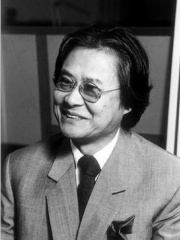
5. Kisho Kurokawa (1934 - 2007)
With an HPI of 63.67, Kisho Kurokawa is the 5th most famous Japanese Architect. His biography has been translated into 26 different languages.
Kisho Kurokawa (黒川 紀章, Kurokawa Kishō) (April 8, 1934 – October 12, 2007) was a leading Japanese architect and one of the founders of the Metabolist Movement.

6. Shigeru Ban (b. 1957)
With an HPI of 62.23, Shigeru Ban is the 6th most famous Japanese Architect. His biography has been translated into 32 different languages.
Shigeru Ban (坂 茂, Ban Shigeru; born 5 August 1957) is a Japanese architect, known for his innovative work with paper, particularly recycled cardboard tubes used to quickly and efficiently house disaster victims. Many of his notable designs are structures which are temporary, prefabricated, or incorporate inexpensive and unconventional materials in innovative ways. He was profiled by Time magazine in their projection of 21st-century innovators in the field of architecture and design. In 2014, Ban was named the 37th recipient of the Pritzker Architecture Prize, the most prestigious prize in modern architecture. The Pritzker Jury cited Ban for his innovative use of material and his dedication to humanitarian efforts around the world, calling him "a committed teacher who is not only a role model for younger generation, but also an inspiration."

7. Kazuyo Sejima (b. 1956)
With an HPI of 61.16, Kazuyo Sejima is the 7th most famous Japanese Architect. Her biography has been translated into 35 different languages.
Kazuyo Sejima (妹島 和世, Sejima Kazuyo; born 29 October 1956) is a Japanese architect and director of her own firm, Kazuyo Sejima & Associates. In 1995, she co-founded the firm SANAA (Sejima + Nishizawa & Associates). In 2010, Sejima was the second woman to receive the Pritzker Prize, which was awarded jointly with Nishizawa. They were only the second partnership to be honored with this prize.

8. Kengo Kuma (b. 1954)
With an HPI of 60.71, Kengo Kuma is the 8th most famous Japanese Architect. His biography has been translated into 26 different languages.
Kengo Kuma (隈 研吾, Kuma Kengo; born August 8, 1954) is a Japanese architect and emeritus professor in the Department of Architecture (Graduate School of Engineering) at the University of Tokyo. Frequently compared to contemporaries Shigeru Ban and Kazuyo Sejima, he is also noted for his prolific writings. Kuma is the designer of the Japan National Stadium in Tokyo, built for the 2020 Summer Olympics. In politics, he is an advisor for the city of Kitakyushu.

9. Kunio Maekawa (1905 - 1986)
With an HPI of 57.28, Kunio Maekawa is the 9th most famous Japanese Architect. His biography has been translated into 18 different languages.
Kunio Maekawa (前川 國男, Maekawa Kunio; 14 May 1905 – 26 June 1986) was a Japanese architect and a key figure of modernism in post-war Japan. After early stints in the studios of Le Corbusier and Antonin Raymond, Maekawa began to articulate his architectural language after establishing his firm in 1935, maintaining a continuous tension between Japanese traditional design and European architectural modernism throughout his career. Firmly insistent that both civic and vernacular architecture should be rendered through a modernist lens appropriate to the contemporary lifestyle of the Japanese people, Maekawa's early work and competition entries consistently pushed back against the dominant Imperial Crown Style. His post-war prefab housing projects borrowed from manufacturing strategies in the automotive industry to create houses that privileged light, ventilation, and openness against the feudal hierarchical principles perpetuated by the interior divisions found in traditional Japanese homes. He is particularly known for his designs of the Tokyo Bunka Kaikan and the National Museum of Modern Art, as well as the Tokyo Kaijo Building, a 25-story tall skyscraper that became the flashpoint for the bikan ronso debates in 1970s Tokyo surrounding urban beautification and building height regulation. Many noted modernist architects began their careers in Maekawa's office, including Kenzō Tange and Miho Hamaguchi. His home (and one-time office), which he designed and completed in 1942, has been preserved and permanently installed in the Edo-Tokyo Open Air Architectural Museum.
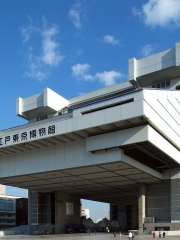
10. Kiyonori Kikutake (1928 - 2011)
With an HPI of 54.78, Kiyonori Kikutake is the 10th most famous Japanese Architect. His biography has been translated into 16 different languages.
Kiyonori Kikutake (菊竹 清訓, Kikutake Kiyonori) (April 1, 1928 – December 26, 2011) was a prominent Japanese architect known as one of the founders of the Japanese Metabolist group. He was also the tutor and employer of several important Japanese architects, such as Toyo Ito, Shōzō Uchii and Itsuko Hasegawa.
People
Pantheon has 12 people classified as Japanese architects born between 1905 and 1971. Of these 12, 6 (50.00%) of them are still alive today. The most famous living Japanese architects include Tadao Ando, Shigeru Ban, and Kazuyo Sejima. The most famous deceased Japanese architects include Kenzō Tange, Arata Isozaki, and Fumihiko Maki. As of April 2024, 1 new Japanese architects have been added to Pantheon including Sou Fujimoto.
Living Japanese Architects
Go to all RankingsTadao Ando
1941 - Present
HPI: 72.31
Shigeru Ban
1957 - Present
HPI: 62.23
Kazuyo Sejima
1956 - Present
HPI: 61.16
Kengo Kuma
1954 - Present
HPI: 60.71
Ryue Nishizawa
1966 - Present
HPI: 53.68
Sou Fujimoto
1971 - Present
HPI: 47.62
Deceased Japanese Architects
Go to all RankingsKenzō Tange
1913 - 2005
HPI: 72.09
Arata Isozaki
1931 - 2022
HPI: 67.52
Fumihiko Maki
1928 - 2024
HPI: 65.11
Kisho Kurokawa
1934 - 2007
HPI: 63.67
Kunio Maekawa
1905 - 1986
HPI: 57.28
Kiyonori Kikutake
1928 - 2011
HPI: 54.78
Newly Added Japanese Architects (2025)
Go to all RankingsOverlapping Lives
Which Architects were alive at the same time? This visualization shows the lifespans of the 5 most globally memorable Architects since 1700.



